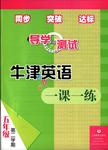题目内容
4.Drivers are advised to reduce speed ___________ the heavy fog.
4. because of

练习册系列答案
 导学与测试系列答案
导学与测试系列答案 新非凡教辅冲刺100分系列答案
新非凡教辅冲刺100分系列答案
相关题目
题目内容
4.Drivers are advised to reduce speed ___________ the heavy fog.
4. because of

 导学与测试系列答案
导学与测试系列答案 新非凡教辅冲刺100分系列答案
新非凡教辅冲刺100分系列答案